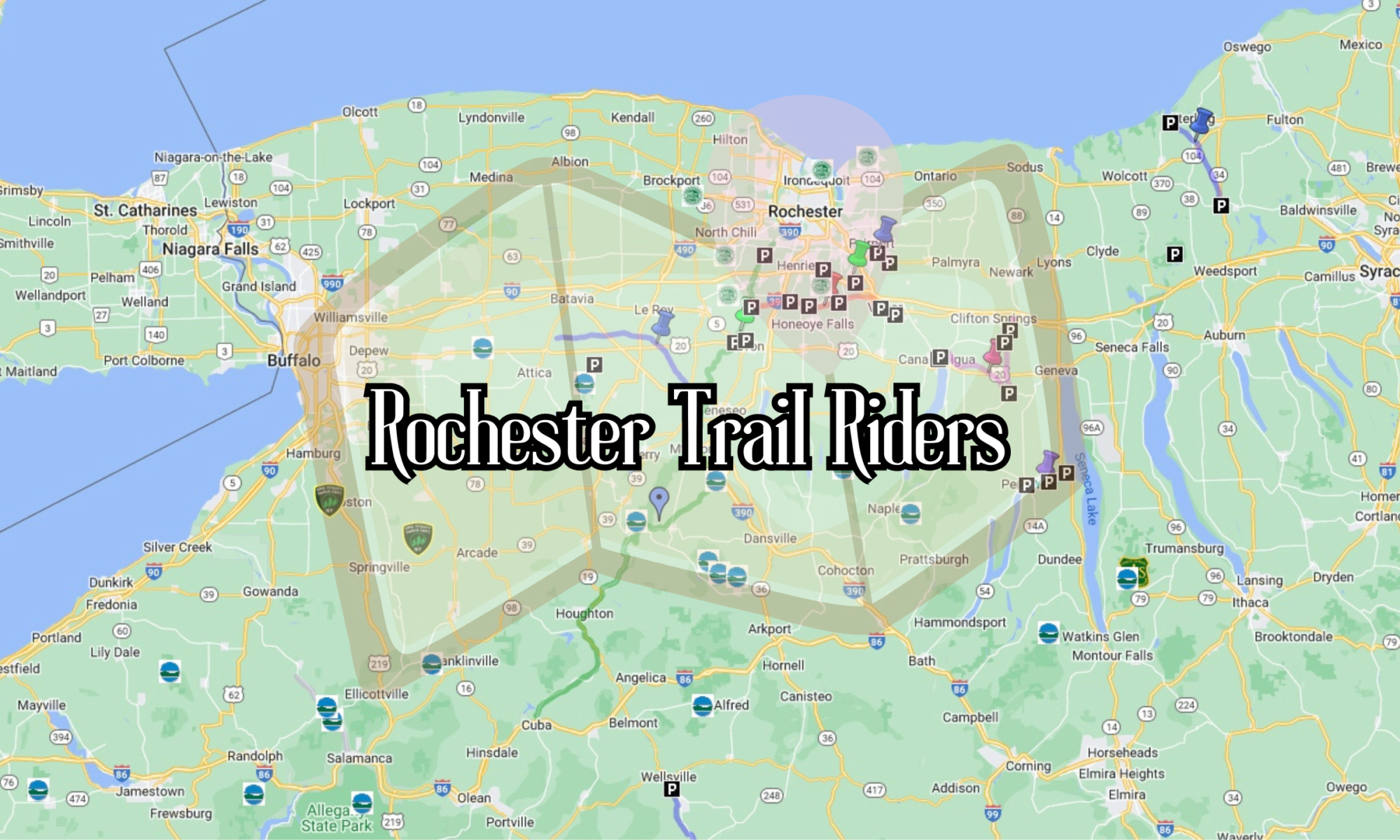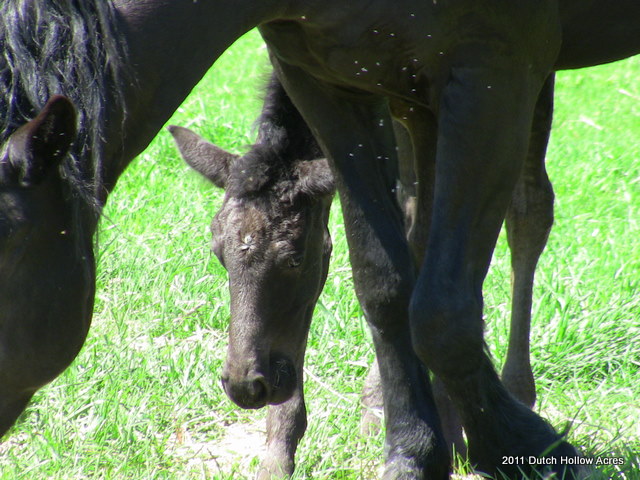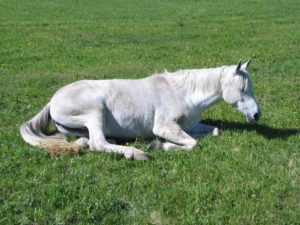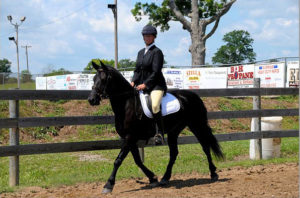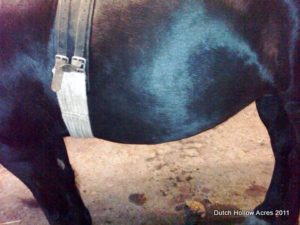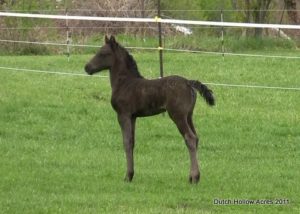 In this podcast episode, we take you on a captivating journey through Mendon Ponds Park, the largest in Monroe County, known for its stunning glacial geology and rich natural habitats. We explore the park’s 30 miles of trails that cater to both riders and carriage drivers, offering diverse experiences from leisurely paths to more challenging terrains. We touch on the practical aspects of visiting the park, like ample parking facilities and navigating the trails. The episode is filled with personal anecdotes and tips for a fulfilling visit, whether you’re on horseback or enjoying a carriage ride. We also share encounters with local wildlife, the park’s unique features, and the sense of community among visitors. Join us as we reveal why Mendon Ponds Park is a must-visit destination for outdoor and equestrian enthusiasts.
In this podcast episode, we take you on a captivating journey through Mendon Ponds Park, the largest in Monroe County, known for its stunning glacial geology and rich natural habitats. We explore the park’s 30 miles of trails that cater to both riders and carriage drivers, offering diverse experiences from leisurely paths to more challenging terrains. We touch on the practical aspects of visiting the park, like ample parking facilities and navigating the trails. The episode is filled with personal anecdotes and tips for a fulfilling visit, whether you’re on horseback or enjoying a carriage ride. We also share encounters with local wildlife, the park’s unique features, and the sense of community among visitors. Join us as we reveal why Mendon Ponds Park is a must-visit destination for outdoor and equestrian enthusiasts.
Carlton Hill Multiple Use Area
Links
Google Maps Coordinates to Parking – Note, come up from the south to avoid the bumpy Bank St Rd
Stats
Ride or Drive – Ride Only
Trail Level – Advanced- steep hills, narrow paths, many creek bed crossings
Parking – Moderate – Will need to back into a space to allow room for others
Distance – 9 miles of trails – Get Printable Map Here
Footing – Fields, packed dirt, some gravel, roots, rocks, water crossings
Challenges – Challenging and fun trails, think safety first, ride with a friend if possible and stay on the trails! Recommend to condition you and your horse before going here. Continue reading “Carlton Hill Multiple Use Area”
Do you know when your horse is in distress?
Today turned out to be rather eventful one on the farm.
6am: With the weather being cold and crappy I ended up turning out Fay and Goliath in their rain sheets last night. This morning when I went out to give them breakfast I noticed Goliath had made a mess of his sheet. It was practically under his belly and one of the leg straps was wrapped around his hind fetlock. He didn’t appear to be in any distress and stood quietly as I took the blanket off him. I call him a goofball and fed him his breakfast.
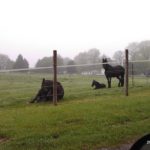
7am: On my way down the driveway as I headed off to work the big guy decided to take a nap next to Cotton and the foal. I remember thinking how cute it was so I snapped this photo.
9am: I get a call from my husband who too was heading down the driveway to work and noticed that Goliath was still down and this time none of the other horses was near him. He was all alone and didn’t even react to the car coming down the driveway. M decided to get out of the car and walk over to the fence to check him out closer. Still, Goliath didn’t so much as blink or lift his head. Thanks to the wet ground and rain Goliath was also shivering.
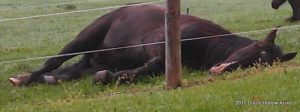
At this point I got the phone call I advised him to do all he could to get Goliath up and I’d call the vet and head back home.
10am: Driving like a mad woman I made it home in record time. Sure enough Goliath was still down and had that glassy eyed look of lost hope. With M’s help I pulled out his front legs and we rocked him as hard as we could to get him up on his chest. At that point the old boy made the effort to actually stand up! Yippy!
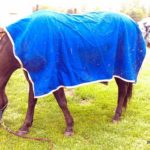
I had M walk him around while I ran to get a thermometer and some blankets. This is when it’s good to know your horse’s “normal” temperature. Goliath’s temp usually hangs around 99.9 to 100 so when I got a reading of 98.3 I was pretty concerned and relieved at the same time. At least it wasn’t a fever but disconcerting knowing my poor boy was very cold.
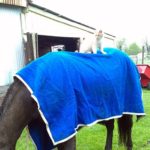
The vet showed up a short time later and did a full physical and thankfully he wasn’t colicing. The vet says it was just a case of “help I’ve fallen and I can’t get up.” Literally he got down, didn’t have the strength or the will to get back up and just “gave up.” Thanks to mother nature being such a PITA he got soaked to the bone and caught hypothermia.
So for today Goliath is covered in blankets and is in a stall to keep him dry so he can warm back up. We’re also taking turns walking him up and down the driveway every 1-2 hours so his fatigued muscles don’t seize up on him again.
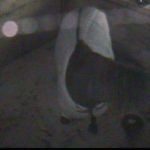
Summary:
Here’s what we think happened. After finding a freshly made mud pit in the pasture I concluded that Goliath probably rolled, got a leg caught in his blanket somehow and proceeded to totally freak out wasting all of his energy trying to free himself from his blanket.
When I found him in the morning and freed him of the blanket he finally could relax and laid down for a nap. However, when it came time to stand back up, his muscles were weak from the struggle the night before and he literally couldn’t get back up. He literally gave up trying and just lay there. If it wasn’t for the fact my husband had enough horse sense to stop and check him out we very possibly could have come to a very sick or possibly dead horse.
Hump Day Horse Photos
The 1 sunny day we had on Saturday and you can already see the flies are a bother.
Share Photos of Your Horses with Us.
This preview will disappear when the widget is displayed on your site.
For best results, use HTML mode to edit this section of the post.
Tips and Tricks – Shedding Season
Ah spring! If you’re a horse owner this means shedding season. Here’s some tips on how I make it through this hairy season.
1. Blanket! I turn my horses out in a nylon sheet or rain sheet. Not only does it help keep the mud off their coats but as they move the nylon helps shine up their coats and get the hair nice and loose.
2. Human clothing – There’s hair everywhere when you brush out your horse, I am covered in it by the end of the grooming session so I usually keep a light windbreaker hanging in the barn. Again, nothing sticks to nylon so it keeps me and my clothes hair free
3. Tools – I use 4 tools to get the job done
a. Metal shedders rake – gets all the mud clumps and the loose hair up
b. Oster coarse curry comb – I love the ergonomic feel of this comb and it keeps my hands from getting over tired. I also like the round disks of hair that I pull off the comb, they are perfect for spreading around the farm for birds to build their nests with
c. Stiff bristle body brush – One the curry comb doesn’t seem to bring up much hair I bread out the body brush – The trick to keeping a body brush clean and free of dust/hair is to rake it across your shedders rake after each stroke. It seems time consuming but you’ll get more hair and dust out of your horses coat if you do.
d. Horse hair brush – I don’t always do this step but the horses really seem to like it. After all that raking, combing and brushing a once over with a soft horse hair brush is relaxing and pleasant to the horse.
4. Some folks like to give a good bath and try to shampoo the hair out of their horse’s coats. I personally prefer brushing it out. I’m not a fan of picking horse hair clogs out of the drain, it’s much easier to brush it out of the barn and let the birds have at it.
5. Clipping – One of my horses is prone to sweating when worked. Come spring I give him a neck and belly clip to help him cool off, sometimes I get carried away and do a full hunt clip. Now if you really want to avoid de-shedding your horse clipping is the easy way out. Just be sure to do blanket management until the weather warms up.
I’d be interested in hearing your tips and tricks in dealing with the shedding season.
Trail Tails: Saying Goodbye
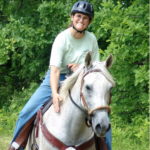 February 26th 2007 a date which will forever be stuck in my mind. Why? That was the day I had to make the awful decision to euthanize my mare Hobbie. Here’s our story on how we got to that point and what planning had to be one.
February 26th 2007 a date which will forever be stuck in my mind. Why? That was the day I had to make the awful decision to euthanize my mare Hobbie. Here’s our story on how we got to that point and what planning had to be one.
Mahaba Ghinwa (Hobbie) was a purebred Egyptian Arabian mare who unfortunately found herself unwanted by her previous owner and was abandoned at the farm where I worked, bored unpaid. On January 1st 2006 I paid off her back board and brought her home to my farm. What a great little mare, she was only used as a brood and had little handling. I worked with her and taught her to ride and drive and she soon became a favorite. So much so she was my mount on our wedding day that October.
Unfortunately 1 year to the day disaster struck. I remember it all too well. January 1st 2007 was an seasonably warm day and the ground was bare and dy. I decided to let the horses out into the big field to stretch their legs since they have been stuck in the mud paddock for a few weeks. I watched them run, buck, kick up for a while and then they all settled in and munched on some grass so I went about my day.
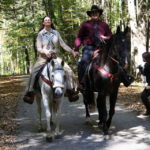 4pm that evening I rang our dinner “cow bell” and waited for the thundering hooves that usually followed but not this night, I only got one horse who sauntered up. Stepping out into the paddock I could see Hobbie out in the field, ears pricked forward and she whinnied out for me. I called to her and she bobbed her head up and down and whinnied again. I knew something was wrong and made my way out to her.
4pm that evening I rang our dinner “cow bell” and waited for the thundering hooves that usually followed but not this night, I only got one horse who sauntered up. Stepping out into the paddock I could see Hobbie out in the field, ears pricked forward and she whinnied out for me. I called to her and she bobbed her head up and down and whinnied again. I knew something was wrong and made my way out to her.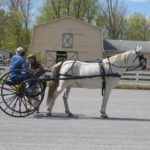
As I grew closer I could see there was a problem. Her left knee was the size of a soccer ball and she couldn’t move. I tried to tempt her forward to get her back to the barn but she wouldn’t budge and I couldn’t blame her. I called the vet and remained as calm as I could, explaining what I saw.
The vet was only 20 minutes away but it felt like an eternity. I had been in this position before and after much crying and tears I had actually come to the decision to put her down. The vet however had different plans.
The vet drugged her, applied a split and we managed to get her back to the barn. Xrays were taken, ice applied and wraps. Not much to do now than sit and wait.
The xrays showed she blew out her knee alright and there wasn’t much holding it together any more, there were even small fractures of bone floating around from the trauma. The vet convinced me to hold off making an official decision until we heard back from Dr. Dean Richardson. Does that name sound familiar? It should. He was Barbaro’s surgeon. Unfortunately, this all happened while he was working on Barbaro and his reply back was delayed because of it.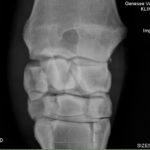
His reply came about the same time a major turning even occurred that sealed my mind. Poor Hobbie finally told me the only way she knew how that she didn’t want to be stuck motionless for the rest of her life. While I was mucking out her stall she made a break for it, jumped a gate and ended up belly deep in snow before the pain became so great her body shut down and she couldn’t move any more. She just stood there, buried in snow shaking from the pain of her ordeal. I managed to get her back inside, gave her some pain medication and called both my husband and the vet. Today was the day, I couldn’t take it emotionally anymore and keeping her confined to a stall in such pain was not fair to her.
But now what? It’s February, the ground is frozen and there’s 2 feet of snow to dig through. At the time we didn’t have the equipment to bury a horse on our own.
I talked to the vet and there were 3 options;
- Hire a backhoe to come to us and bury her on our property
- Trailer her to a crematorium
- Cornell does “group” cremations of “whole” animals
- Rush Pet Cemetery will cremate your horse in “pieces” because their crematorium isn’t large enough for a whole animal
- Have her buried in a pet cemetery like the one in Rush
#1 didn’t work because we had not lived on our property long enough to know where we could bury a horse not to affect our water supply. Cremation was expensive and Cornell was quite a drive and I didn’t like the idea of chopping her up to accommodate a smaller crematorium.
That left working with Rush Pet Cemetery to have her buried there. What nice people. They made a very hard time as stress free as it could be and best of all it was affordable.
We loaded Hobbie up in the trailer and opted to meet the vet at the cemetery. I won’t bother you with the details but there was much crying, hugs and saying goodbye.
It was the longest ride home with an empty trailer and to this day I still can cry at the thought of her. She was a great horse and I will miss my little Hob Gobblin.
What caused her busted knee? No clue, I walked every inch of that field and there’s not so much as a divit or rock. She just must have stepped wrong.
Trail Tails
The Tuesday Horse Blog Linky
Promote Your Horse Blog
Sharing Your Blog Link
Please use your FULL perma-link URL not just your blog domain name.
Example Bad: http://www.RochesterTrailRiders.com
Example Good: http://www.rochestertrailriders.com/2010/12/winter-fun-with-horses/
Pay it back! All we ask is that you pay it back and place either a link back to RTR in your post or use the following button in your post.
Please comment and remember to leave comments on other folks pages too! Everyone loves feedback.
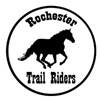
This preview will disappear when the widget is displayed on your site.
For best results, use HTML mode to edit this section of the post.
Adventures in Breeding AI – Artificial Insemination
As I wondered out to the barn in blowing wind and single digit temperatures to give my mare her 7 month EHV shot it reminded me of all the craziness that got me to this point.
To breed or not to breed?
When I bought my mare I never initially intended on breeding her. I was looking instead for a carriage horse and a best friend and of course something that fulfilled my childhood fantasies of a black horse with lots of hair. I have always had a particular fancy for geldings and I searched high and low for one that would match my picky tastes. Instead I found a cute little mare named Cotton.
It was love at first sight when the owner brought her out of the barn into the daylight. This little Morgan/Friesian (Moriesian) girl had the “it” factor for me. The way she moved even at a lazy walk was impressive. She was friendly and though she young and was only green broke to drive I knew she was something special.
We brought her home and I got to work training her further in driving and eventually to saddle. I challenged her in every way imaginable and she seemed almost bored with most obstacles. 4 years old and bombproof by nature. In my mind she was my perfect horse.
It wasn’t until I started showing her that I realized how special of a horse I really had. Everyone thinks their horse is the best and looks judgmentally at others when showing. But when Cotton would back out of the trailer people would actually stop and watch. They’d come up and ask me questions about her and want to know more about Moriesians. We had a blast at shows and to my surprise would win or place at all of them always coming home with the blue for confirmation. It was then that I realized I might actually have a special horse and started thinking about breeding.
Breeding for what?
I made my mind up to breed but why and for what? Immediately I knew I wanted to breed for another Moriesian but what %? Full 2nd generation? Breed to a Morgan or to another Friesian?
It was time to look closely at my Mare, where are her faults? After thinking it over I wanted a horse with a little more knee action, more hair, and good hoof angle (no Friesian club foot). That ruled out breeding to a Morgan and I didn’t want to add the height a Friesian would bring so I decided on breeding to another Moriesian.
Mr Stud Muffin
I looked at several photos and videos of Moriesian Stallions and kept the picture of my ideal horse in my mind at all times. Some stallions were too big, I wanted a mature horse around 15hh. Some stallions looked lanky and must have been bred to light Friesians or the saddlebred type Morgans. The biggest problem of all was finding a Stallion that didn’t inherit the awful club foot of the Friesian yet still retained sport-horse movement.
Finally after all my searching I found Mr Right. Medallion Moriesians Ivan-Reno. Isn’t he dreamy? 14.3hh with a beautiful Morgan type head, sport-horse movement, hair and looked like a mini version of a Friesian. I loved him.
Contact and Contracts
Mare….check. Stallion picked out….check, but he’s in Arizona! Time to talk to my vet.
Like a great vet they try to talk you out of it. The phrase I remember most was; “Do you love your horse? Yes? Then don’t breed her.” The reason for such a harsh phrase is pregnancy and delivery can result in injury or death! I’ve worked on many farms and am very familiar with what can go wrong.
I assured the vet that I was aware of the risks and thought the pairing and resulting foal definitely outweighed them. We then proceeded to do a check up to make sure my little girl Cotton was healthy enough to have a foal and would be receptive to an AI breeding. Vet approval… Check
Next step was to talk to the stallion owner. What a great experience, we chatted and sent more photo/videos back and forth and discussed what both of us wanted to see in a foal. Contracts were drawn up and $ changed hands. That was easy enough!
I need sperm STAT!
What no one ever tells you is a stud fee of $800 is the minimal cost of AI breeding. My new rule of thumb; whatever the stud fee is, multiply it by 3. So your $800 fee turns into $2,400+ of vet bills and shipping. Why? Because when your mare is in heat you need sperm NOW.
Step 1. Determining when your mare is in heat. For most folks this part is easy. Most mares get rather opinionated, pee at anything with 4 legs, will masturbate on fences, the side of the barn, water tanks or hay bales. Not Cotton. Come to think of it I have never seen her in heat. Her temperament is even and she has never shown any signs.
How do you determine the heat cycle of a horse when they won’t tell you? Ultrasounds! CHACHING! Every 2-4 days for 2 weeks this poor mare was getting an arm stuffed up her rump until we finally found the perfect follicle.
Step 2 I need sperm. I happily called up the stallion owner and informed them that Huston, we have a follicle. No go, the stallion was not a location where it could be easily collected. DAMN!
More ultrasounds for Cotton and a reschedule with the stallion owner and follicle #2 was looking beautiful.
We called up the stallion owner this time and there were only 2 hours away from a collection facility. We’d have sperm in the mail and would get it by the next day. Yippy!
The vet gave me a shot of prostaglandin to give Cotton that night so make sure she ovulated in time to meet her man.
Step 3 Breeding time! I trailered my girl to the vets the next morning and promptly remembered, crap, I forgot to give her the injection. My vets looked rather concerned as well and we decided to see if things would work anyway. The blue shipping container arrived right on time and insemination was a rather uncomplicated process.
Is she pregnant?
With me missing the injection we were all worried Cotton wouldn’t ovulate in time. For this to work Cotton would have to ovulate within 48hrs of insemination.
Unfortunately 48hrs came and she still had not ovulated. We called the stallion owner up all bummed out. Luckily while the stallion was being collected they also took straws for Frozen as well as the cooled they shipped me. So, out they sent some frozen for the next time.
I brought Cotton home all heartbroken and practically out of money at this point. I had enough funds for one more attempt since I just paid $300 to ship frozen semen across the country.
The Vet came back out 10 days later to check Cotton to see when she would be ready for another attempt and to our surprise, she’s pregnant! YIPPY!
We had a baby foal floating around on the ultrasound. I immediately called the stallion owner and the 2 of us squealed with joy. Me, I was so happy because she took and the stallion owner so happy that Ivan was that potent past 48hrs.
Pregnancy
Mare pregnancy is rather uneventful. Mare care…. Vet orders stated for me to do absolutely nothing different. Same feed, same hay, no supplements and to give EHV at months 5, 7, and 9.
I was surprised on how little Cotton showed up until the last month of pregnancy. About the only difference I could find was that her winter blanket didn’t fit right. I could see her belly under it and the straps were practically let out. This is a photo of her belly just 6 hrs before foaling.
Foaling
The calendar was coming up on 11 months quickly and I decided since this was Cotton’s first foal (and mine) I’d send her to a mid wife so to speak. 2 weeks before due date I loaded Cotton up in the trailer and we headed over to Carlland Stables.
Easter Morning around 2am we got a call that Cotton was in labor. By the time I got dressed and drove to the barn the baby was already born. The whole event went by the book and we were blessed with a little filly and boy she is a beauty. We ended up naming her “Is A Bella” Izzy for short.
Rinse and Repeat
Would I do it again? Yup! Izzy sold quickly to a woman who fell in love with her dream horse much like I did with Cotton. So, once again I’m dreaming of little hoof beats around the pasture. Here’s to hoping for a healthy 2011 foal!
DIY: How To Build a Horse Run In Shed for Under $300
Re-Post permission from AlpacaBytes.com
My weekend was a busy one. With winter coming so are my winter horse boarders. This year I ended up filling up my 20×35 run-in shed with hay which means I needed a place for the horses to get out of the wind, rain, and snow. The problem? Yeah I’m broke. So after researching shelters that are frequently used for alpacas, sheep, goats, and other small livestock I got to thinking; Why can’t it be modified for horses? The general idea was to use cattle panels for a shelter as I saw at this site.
Saturday morning I woke up with an “ah ha” moment on how to modify the cattle panel shelter for horses. The idea was to sink some wood posts, use 3/4″ plywood as a kick board, and attach the panels to that.
How to build the horse run-in shed shelter barn
My Supply List
- (8) pressure treated posts (round or 4×4 will work)
- (3) 3/4″ ply wood sheets – non treated ok if painted
- (3) Cattle Panels 52″ x 16′
- 12×16 heavy duty tarp
- box of 2″ screws
- box of fence staples
- 30 thick UV black cable ties 11″
- 100 8″ UV black cable ties
- Can of barn/fence paint
- Paint Brush
I placed the posts 4′ apart down the long side and 9′ wide. We get some good snow and wind storms so I didn’t want to put the posts any wider or the dome wouldn’t hold the wind/snow load. Once the posts were in I put up the ply wood and made sure it was level holding it up with just a couple of screws temporarily.
So far this was all a 1 person job. I needed help to put the cattle panels in place. We bent them up and placed them between the posts and the ply wood pushing them down 2 squares on each side and then screwed the plywood back to the posts. I also held the panels to the top of the posts with staples.
We over lapped the cattle panels as seen in the photos and secured them heavily with cable ties.
Putting the tarp on was easy, I unfolded it, tied a rope to the 2 end corners and threw the top over the dome and pulled the tarp up and over. I made sure it was even and secured it down with cable ties.
Finishing touch was to paint the plywood so it would weather better. You can paint the plywood before securing it but I really didn’t have a place to paint it first and found it easier to paint it after it was up and off the ground.
Cost: $250
Time: 4hrs – This assume you have a Post Hole Digger or Pounder on your tractor or have rented one.
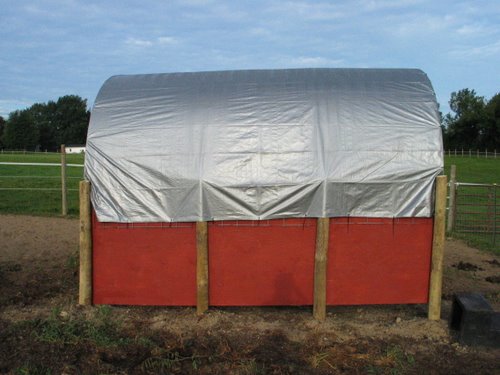
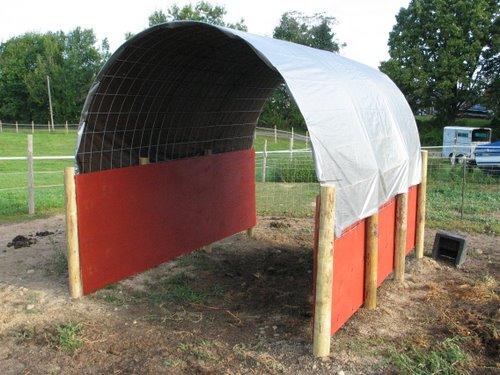
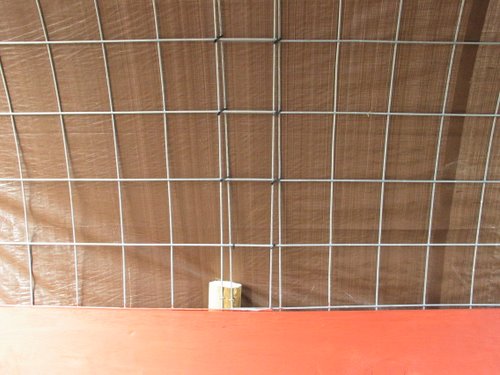
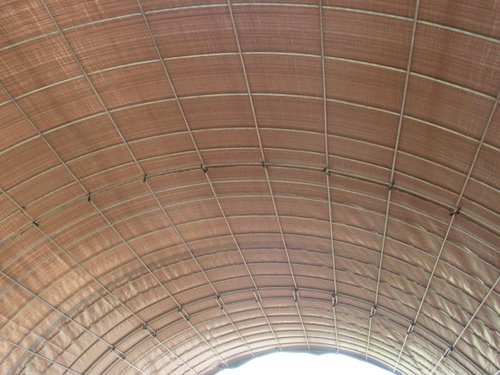
—————————————————————
UPDATE: On 9/28-29/09 we had some nasty storms roll through. Sustained winds of 20mph and gusts fof 50mph. The shelter held fast and didn’t appear to even move in the wind. I thought the horses would be afraid of the sound of the tarp or the cattle panel roof as the wind hit it but nope. Even my scardy-cat took cover in the shelter. I have high hopes for it this winter. I do plan on brushing snow build up on it not to give it any excuse to sag.
————————————————————–
UPDATE: on 10/25/09 Well the winds have snapped off some of the thick cable ties holding the taprt to the cattle panels. I’ve decided to replace them with twine from my hay bales. I folded the twine in half and made sure the knot was tight. I’ve had twine hold a fence gate up for 2 years before it failed so there’s no doubt in my mind it’ll be up to the job of holding a tarp on.
————————————————————–
UPDATE: 12/5/09:
So far so good. We’ve been putting the Big Bale Buddy in the center of the run-in which is keeping the hay dry and allowing 4 horses, 2 on each side, eat without a problem.
Big Bale Buddy – Round Bale Feeder Part 2
Re-Post permission from AlpacaBytes.com
Hello again everyone! Well this is year 2 of using my Big Bale Buddy. Yes it’s still in one piece with no rips or tears (that I didn’t purposely put there). Click Here for Year 1 Review
This year I have a new hay supplier and the bales I’m feeding are smaller than the 4×5’s I had last year. Which means my Large Buddy is too big for my new hay. Whatever, since my buddy is now 2 years old and is out of warranty I opted to “modify” it to work with my current hay bales. Well, let me tell you about my experimentation this year.
– Attempt 1 – I put the “to large” buddy on the first bale and set it out as usual. The horses almost immediately figured out that the buddy was too lose and pushed it down the bale and proceeded to make a mess. Errrr.
– Attempt 2 – had me cutting a little hole and pushing a fish tape all the way through the “elastic” part of the buddy. My hope was to back pull a rope and use that to cinch up the top so it would remain tight. FAIL. The rope broke and the area was too tight to work in.
– Attempt 3 – I happen to have a Shires Large Small Mesh Hay Net hanging around. I thought what if I make a slow feeder out of my buddy. I punched holes in the buddy below the reinforced edge every 4-6 inches or so. I then used an old nylon lunge line that was missing it’s snap end. I wove the line though the buddy and then though the net all the way around and secured it with a knot. After a few tries I learned that you always want to weave feeding the line from the inside to the outside of the buddy and to pull it tight with every weave cinching up the top.
Tada! Slow Feeding my round bale. It’s a time consuming process though. About 5 min to get the bale out and put the Big Bale Buddy on as usual and then another 15-20 minutes to weave the hay net into it.
I check the buddy every day to make sure nothing has broken, and that the hay net is still secure and no holes are forming where a hoof could get caught.
Feeding the round hay bale with a slow feeder is totally worth it. My “naked” 500lb bale with 3 gluttonous horses only lasted from Sat – Thurs, 6 days. My hay mesh modification extended the life from putting the bale out on Saturday and not having to put another one out until the following Tuesday. That’s 10 full days AM and PM of the horses eating off of it.
If I am doing the math correctly; 500lbs over 10 days = 50lbs of hay per day being consumed vs. 84lbs being consumed per day without the saver.
NEWS UPDATE: Of course just after I figured this whole slow feeding thing out the folks at Buddy Inc have come out with a full size slow feeding hay net that covers the entire round bale and even large square bales. I think I’ll purchase one and test it out and give you all my 2 cents about it!
I still highly recommend the Big Bale Buddy to anyone who feeds round bales. I’m so pleased with this product I now am a reseller!
Buy Your Bale Buddy Locally @ AlpacaBytes.com
Big Bale Buddy – Round Bale Feeder
Re-Post permission from AlpacaBytes.com
This year (Fall 2009) I decided to feed round bales to the horses to help keep my chores to a minimum and to make sure the skinny boys have hay 24/7 so they fatten up for me. Last year I fed the bales as is and had a ton of waste. One bale would only last me 6 days for 3 horses and the waste I had to clean up in the spring was horrendous. I thought about traditional round bale feeders and some newer models that resemble doll houses if you ask me.
The biggest problem I had with almost every single feeder was the ability for a horse to get a leg stuck. I have 2 horses who insist on putting their feet on or into anything they possibly can so that ruled out almost every single round bale feeder I found. Expect for one, the Big Bale Buddy.
I purchased the “Large” size which is said to fit a 4’5” to 5’2” diameter round bale. Good thing too because the ultra bargain 700lb round bales I got for $12 each were 5 footers. Note: this product ships from Canada and does take a full 10 days or so to make it to you.
Putting on the Big Bale Buddy:
Reviews I read said the first time putting it on would be a real chore. Well if you have a helper it isn’t so bad. My hubby and I managed to get the Big Bale Buddy on in 2-3 minutes or so. I’d imagine putting it on by myself would have been a lot more involved.
We hauled the bale out to the field and flipped it upright and finished pulling the Buddy snuggly up to the top so it fully covered the bale leaving the top open.
The horses were a bit confused by it at first and cautiously approached the Big Bale Buddy. Once they figured out it was a food dispenser it didn’t take long for them to warm up to it. Of course it instantly turned into a scratching post and everyone took turns doing neck and butt scratches on it.
Since there’s still a tiny bit of grass left in the pasture the bale isn’t overly interesting as a food item yet. I’ll be sure to keep this post updated as the bale gets eaten.
5 Horses vs 700lb round bale in a Big Bale Buddy
=====================================
Day 1:
So far the bale is holding up really well. Instead of it unraveling and the horses digging through it, trapling, peeing, and pooping on it the bale looks just as good as when I first put it out there. The only waste is nothing more than a handful scattered around the edge. No rips or tears in the Buddy either.
=====================================
Day 3:
I’m amazed on how much hay they’ve eaten and how little waste there is. They have been eating around the core and all the slack just falls into the bag. The little waste that has fallen out of the bag I picked up and tossed over the fence to the alpacas. They happily ate the rest. Last year 3 horses would eat through a 700lb bale in 6 days. Now without all the waste the same size bale is easily feeding 5 horses.
=====================================
Day 6:
Rain in the forecast today. I decided to move the bale into the run-in shed to keep it dry. Oh yes I said move it. The Big Bale Buddy has kept the bale in tact enough that we were able to tip it over onto the carry-all and relocated it. The bale is about 2/3 eaten, I’m guessing theres about 300lbs left. There’s hardly any waste, just a small ring of hay around the bale. Funny observation…. There was a ring of poop 1 horse length all the way around the bale. Without the buddy the bale would have been ripped apart, spread around and all that poop would have been on good hay.
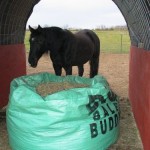
=====================================
Day 7 & 8:
Well the bale fully collapsed on itself and there was just loose hay left in the bottom. I picked up the buddy and dumped the rest of the hay in an empty stock tank I use to feed flake hay in. By morning all the hay was gone and it was time to put out a new bale. I totally love this product, so easy to use, and the only hay feeder that I’ve seen that actually allows the horses to eat all of the hay without wasting any of it.
=====================================
2nd Bale:
The 2nd bale I put out lasted 7 days with the 5 horses eating it 100% without access to the pasture any more. They emptied every ounce of hay from the bag. When the bag is empty they walk on it and dig through the folds looking for that last little leaf. None of my horses will be afraid of tarps after feeding with the bale buddy I’m sure!
=====================================
12/4/09:
It’s that time of year where the paddock is solid shoe sucking mud. YUCK. Good news though. Dry hay! My bale buddy is no longer green and is caked in brown mud but the hay inside it is clean and dry. Hay was eaten right down to the last little nibble again.
=====================================
12/31/09
Well my only worry about the Big Bale Buddy came to light the other day. When the bale gets to the end you have a mostly empty bale and the horses poke through it for the last bits. I was worried that when they step in it they could get a leg caught and I was right, kind of. My new spookie horse “The General” wanted to come over for a treat and wasn’t smart enough to pick his feet up when walking out of the bag so the bag came with him. Normally this horse bolts at the sight of a plastic bag but he seemed totally unconcerned about the buddy stuck to his hoof. About 3 steps later he fianlly got annoyed with his shadow and picked his foot up and out of it. I’ve decided not to think of it as a scary posibility any more but more of a Bale Buddy training aid! ![]() )
)
=====================================
1/8/10
=====================================
3/6/10
Spring thaw. The pasture is off limits and the buddy is now in the middle of our “mud” paddock. With the snow pack melting during the day and freezing at night the mud is DEEP. The buddy looks to be sunk in 4-6″ into the mud. The good news, the hay inside is dry as can be. This time last year the hay would have been stepped on and squished into the deep mud making even more of a mess and wasting more than a 3rd of the bale.
